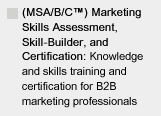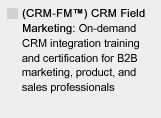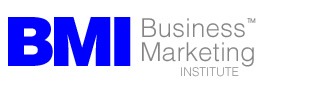MAKE SURE YOU CONTINUE TO RECEIVE EACH ISSUE OF TUESDAY MARKETING NOTES—CLICK HERE TO RENEW YOUR FREE SUBSCRIPTION (IF YOU'VE ALREADY SUBSCRIBED, NO NEED TO RE-SUBSCRIBE)

Develop Content Based on Your Buying Cycle: Five Ways to be More Relevant
by Michele Linn, Linn Communications
Publishing relevant, educational content for your prospects and customers is all the rage in B2B marketing (and for good reason). There are so many ways to be pertinent such as targeting a specific audience, using words your reader understands, and focusing on your prospect’s needs instead of your own.
Another way to increase your relevance is to customize content for stages in the buying cycle. This isn’t a new idea, but it isn’t something I see happening consistently, either.
Why is this important? Consider this: if someone is just starting to explore a problem, you will lose them when you start talking about the intricacies of your product or service. On the other end of the spectrum, if you have someone who is ready to purchase, you’ll turn them off with an exposition of the “problem in the industry.”
While there are no hard and fast rules for creating content specific to the buying cycle, here are five things to think about.
Title
Arguably, your title is one of the most important aspects of your content: if this does not attract interest, you won’t get any viewers. Also remember that the title is the one thing that typically gets picked up by search engines, RSS feeds and Twitter, so if it is non-descript or irrelevant, it won’t get noticed.
Because of this, your title needs to use terms your ideal prospect is searching on—and this differs based on where they are in the buying cycle. In general, earlier in the buying cycle, prospects may be searching for a pain or very general terms if they don’t know your particular solution exists. However, the more advanced they are in the buying cycle, they will likely be searching on more specific terms.
As an example, let’s say you are having issues managing your leads: you know you have a problem, but you don’t know where to begin. You may search for phrases like lead generation and lead management. As you do more research you will likely start searching on more specific terms such as lead nurturing, lead scoring and marketing automation, terms that you may not have been familiar with when you initially started your search. Your title needs to speak at the right level for your audience.
Problem Setup
Good content addresses a pain point as a way to connect with your reader. In general, earlier in the buying cycle, you need to spend more time addressing the pain, using things such as trends, research and quotes from analysts and industry leaders to prove the issue. Later in the buying cycle, your reader is well aware of the pain: quickly acknowledge it and move on.
Solution Description
If someone is early in the buying process, you want to stay away from talking specifically about your product or service; instead, you need to sell them on the idea of the general solution. At this point, your content may be similar to your competition.
However, when communicating with someone who is further along in the buying process, your goal is help them understand why they want to work with you. For instance, you may want to include something like a checklist of things to consider when choosing a vendor (subtly highlighting your competitive advantages, of course).
Call to Action
All marketing content should have a call to action: what step do you want the reader to take next? If a reader is earlier in the buying cycle, you want to provide additional content that educates them on the general solution, perhaps a white paper, webcast or case study written to move them along the path.
Prospects who are more advanced want to be able to dig into your product or service, so it makes sense to offer things like demos and ROI calculators. Of course, white papers, webcasts and case studies can also be used later in the buying process, but the content needs to address the concerns your prospects have at that stage.
How You Market Your Content
If you are using a deliverable to generate awareness, you probably want to get it out to as broad an audience as you can, using marketing media like PPC (pay-per-click advertising), content syndication, other online advertising, and news releases. Similar to your choice of title, you need to make sure that your promotions use words your audience searches on early in the buying cycle.
The further you move along the buying cycle, the more defined your audience will be. Instead of taking the broad brush approach, target the prospects who have already expressed an interest in your solution—and who want to know the specifics. You may try programs such as direct mail and e-mail campaigns for inclusion in a nurturing program.
Creating content based on the buying cycle isn’t something that happens overnight. But, if you become cognizant of the path to purchase and start mapping out your content, you’ll quickly see how your content can become more relevant to your prospects.
Michele Linn (http://www.linncommunications.com/) is a freelance marketing writer specializing in white papers, research reports, feature articles, case studies, and other B2B communications. Her business is devoted to making the job of B2B marketers easier by producing buyer-focused content and providing insights on how they can market it. She is also a founding member and frequent contributor to the Savvy B2B Marketing blog (http://savvyb2bmarketing.com/blog). Send her an email (michele@linncommunications.com) or follow her on Twitter (http://twitter.com/michelelinn)








